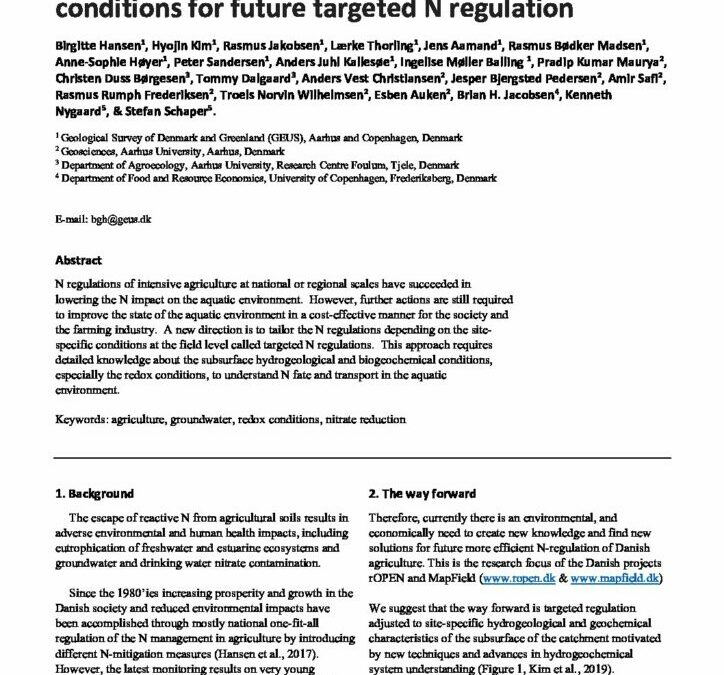Innovative explorations of subsurface redox conditions for future targeted N regulation

N regulations of intensive agriculture at national or regional scales have succeeded in lowering the N impact on the aquatic environment. However, further actions are still required to improve the state of the aquatic environment in a cost-effective manner for the society and the farming industry.
A new direction is to tailor the N regulations depending on the sitespecific conditions at the field level called targeted N regulations. This approach requires detailed knowledge about the subsurface hydrogeological and biogeochemical conditions, especially the redox conditions, to understand N fate and transport in the aquatic environment.
The escape of reactive N from agricultural soils results in adverse environmental and human health impacts, including eutrophication of freshwater and estuarine ecosystems and groundwater and drinking water nitrate contamination. Since the 1980’ies increasing prosperity and growth in the Danish society and reduced environmental impacts have been accomplished through mostly national one-fit-all regulation of the N management in agriculture by introducing different N-mitigation measures (Hansen et al., 2017). However, the latest monitoring results on very young groundwater shows signs of deterioration due to increasing and relative high nitrate trends and concentrations (Hansen et al., 2019).
